Salmon Fishing In Alaska: A Complete Guide
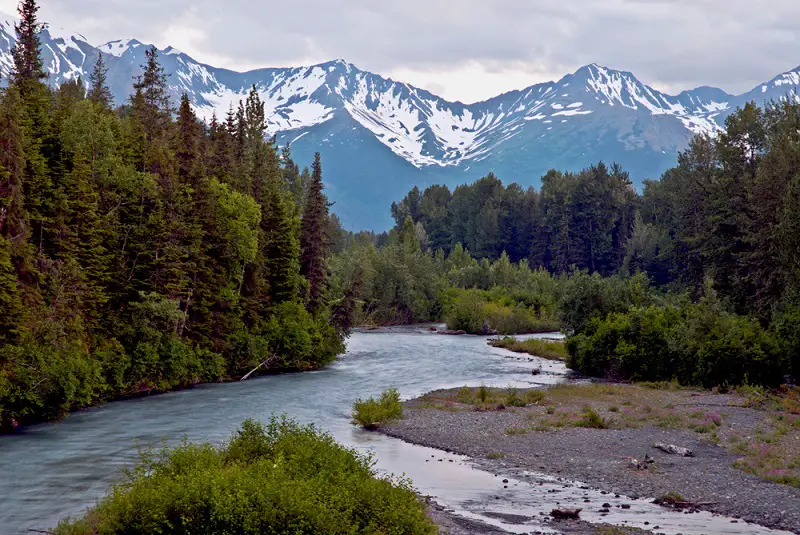
Alaska salmon fishing is the best in the world, with some rivers receiving millions of returning salmon every year.
To top that off, all five species of salmon are available from May to October. Depending on the species, these salmon range from 5lbs to almost 100 lbs. With mountains in the background, the Salmon fishing in Alaska is hard to beat.
Alaska Salmon Species
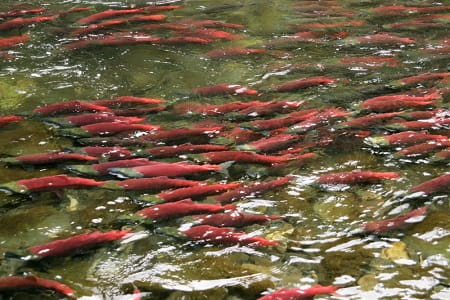
There are five species of Pacific salmon available in Alaska and some bonus fish that you are likely to encounter when fishing for salmon in Alaska.
They include:
- Chinook salmon
- Coho salmon
- Sockeye salmon
- Chum salmon
- Pink salmon
- Steelhead – not actually a salmon but a large migratory rainbow trout that acts like a salmon.
Anglers can target these Pacific salmon species in freshwater or saltwater with flies, lures, or bait.
Coho Salmon Fishing In Alaska
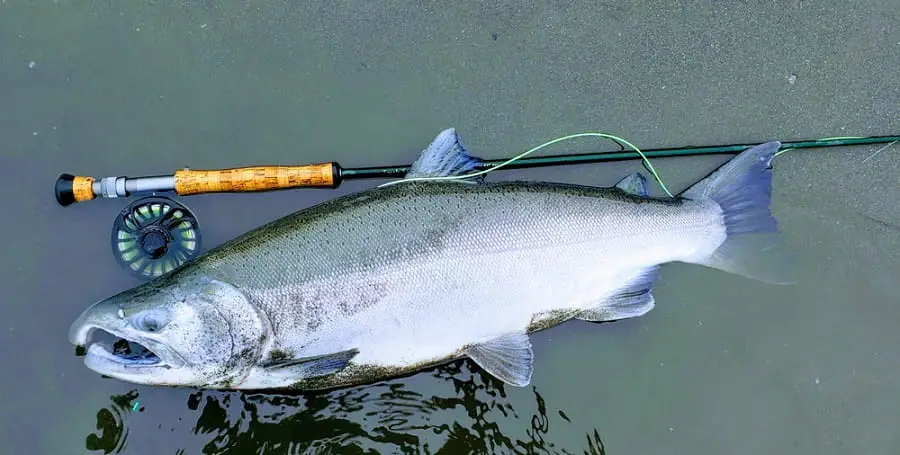
Alaska Coho salmon is one of the Pacific salmon species that are most preferred by anglers.
The reason is that wild Coho salmon will feed as they move up into the rivers, they are abundant, and they fight like crazy.
Many anglers call them silvers or silver salmon.
Most returning silver salmon are 8 to 15 pounds, and some are caught over 30 pounds. It’s not uncommon to catch silvers mixed in with other species of salmon or even steelhead.
Jig fishing, fly fishing, bait fishing, and lure fishing are all effective for Coho salmon fishing.
Twitching Jigs For Coho and other salmon is popular, very effective, a lot of fun, and a great way to cover water and find active salmon.
King Salmon Fishing In Alaska
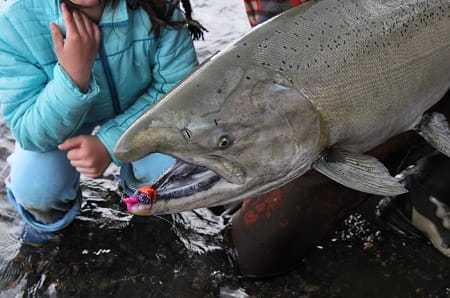
Alaska fishing is known for its chinook salmon fishing.
Chinook salmon, also known to many as king salmon, or just kings, are another preferred salmon species targeted by Alaska anglers.
Kings get their name because they are the largest of the Pacific salmon species.
An average-sized Chinook salmon that has returned to the river to spawn is 18 to 30 pounds, but many are caught between 30 and 40 pounds.
The largest recorded Chinook salmon was from Alaska and weighed a freaking huge 126 pounds. This salmon was caught in commercial fishing nets and was not an angler-caught salmon.
An experienced angler will know when the big kings enter the river and will know where to target them, but new anglers might struggle to hook up. Knowing the best time to fish the kings, and also using the right equipment is a must since kings are known to destroy rods and reels.
You will need heavier gear and line for these brutes.
Hiring experienced guides is a great way to increase your chances of locating and catching a chinook salmon. I discuss some great guiding services below.
Alaska Fishing For Pink Salmon
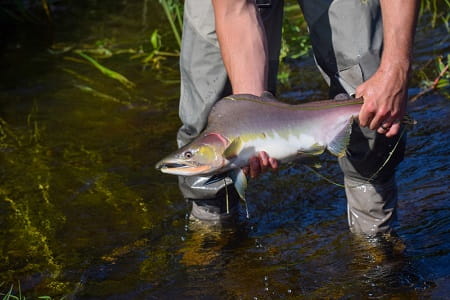
Pinks, also known as pink salmon is another consideration when planning an Alaska fishing trip.
Pink salmon are smaller, averaging 3 to 5 pounds, but they return in huge numbers and can be a blast to fish for.
Anglers who want action from smaller, manageable salmon will enjoy pink salmon fishing.
These pinks are similar in size to trout and will often inhabit the same rivers as trout and Dolly Varden, so there is a chance to catch any of these species in the same spots.
Experienced guides will know where to go to catch these awesome little salmon.
Some anglers will spend a half day chasing big fish and then take a break and spend half a day fishing for pinks.
With pinks, lighter fishing gear is required so you can put your king salmon gear aside.
Sockeye Salmon Fishing
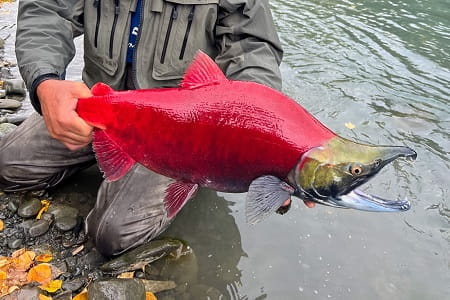
Sockeye salmon, also known as red salmon or reds, are considered tough-to-catch fish by many anglers. However, they can be caught with specialized methods, especially when they return in massive numbers up the river.
Anglers will use special flies and use a method called lining. Yes, Lining is legal for sockeye fishing in Alaska.
If you are interested in steelhead fishing, check out Alaska Steelhead Fishing.
Best Time For Alaska Salmon Fishing
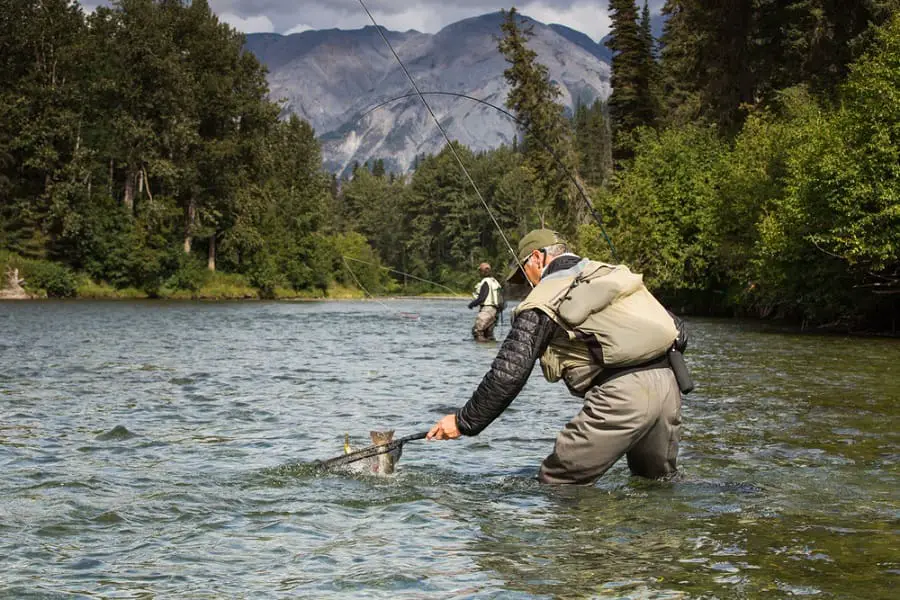
For freshwater fishing trips, the season will open and close based on the river or lake in which you fish.
The Department of Fish and Wildlife will use local data to determine when to close the season. This is especially true for trophy king salmon fishing as they want to preserve the strength of the runs year after year.
- King Salmon: Mid-May to Late July. Mid to late June is best.
- Silver Salmon: (Coho) Early July to Late September, August and September are best.
- Sockeye Salmon: Mid-June to Mid-August – July is Best.
- Chum Salmon: Mid-July to Mid-August.
- Pink Salmon: Mid-July to Mid-August.
Generally speaking, the best fishing times for Alaska salmon fishing trips are from May until October.
Most anglers do not want to deal with the Alaskan winter, though there are ice fishing options where you fish in a hut and can target land-locked salmon.
Alaska Salmon Fishing Seasons
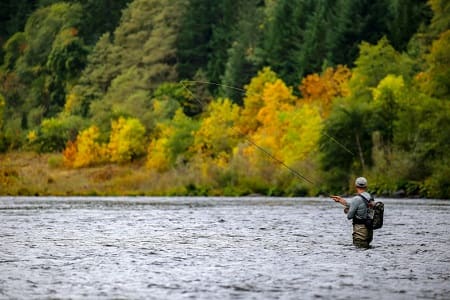
It is important to check for updates from the Department of Fish and Game each time you go salmon fishing.
There is a lot of useful information on their site, including projected run times and harvest numbers, run times based on location and rivers, and important changes to the season as it progresses.
Fishing Licence and Regulations For Fishing For Alaska Salmon
According to the Alaska Department of Fish and Game site, you must have a fishing license if you are aged 16 or older. For kings, you will need a king salmon stamp. You can purchase an Alaska fishing license online at the Alaska Department of Fish and Game.
A game warden will check your license, catch, and stamps.
Best Salmon Rivers In Alaska
- Kenai River: The legendary Kenai River is a top destination. The river produced the current king salmon record of 97 pounds. Both boat and walk trips are available on this river. Book all-inclusive lodging and your guides well in advance for this river.
- Nushagak River: Home to legendary runs of huge kings with good fishing from June into the fall. With such huge runs, booking a fishing charter and your lodging early is recommended.
- Alagnak River: Situated in southwest Alaska and part of the Bristol Bay watershed it has great natural habitat for salmon. This an excellent river for a salmon fishing trip.
- Copper River: Known for it’s big salmon which include Kings, silvers, pinks, and an incredible number of sockeye, but the big draw of the Copper River are the trophy rainbow trout. Situated near Cooper Landing. It’s a popular river, so it’s recommended to book all-inclusive lodging early to ensure you get there during prime time.
- Naknek River: huge king salmon runs overshadowed by sockeye salmon runs – 35 miles long and excellent for drifting – an outstanding Alaskan adventure. An excellent time to fish is June through to the fall, but book lodging early and check with them for the prime time.
- Russian River: The Russian River is known for red salmon and silver salmon runs, with some areas having special fly fishing-only zones. This is a great river for a day trip with good opportunities to catch fish.
- Kasilof River: The Kasilof River is known for its runs of Kings, sockeyes, Silvers, and steelhead. Because of this, you will find good fishing from June to late fall. Anglers fishing this river should look into nearby lodging and be sure to have the right tackle that can handle any of these species.
Effective Alaska Salmon Fishing Methods
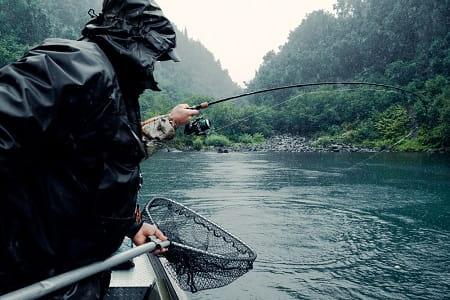
Saltwater fishing for salmon includes a variety of methods that work but can be extremely challenging and fun.
The first is boat trolling for salmon, usually with flashy spoons. Silver is the go-to color.
You can also fly fish for salmon in saltwater from a boat or from shore. You need a deep diving fly or sink tip lines and a little patience, but once you dial in the salmon and fly fishing, you may never troll again.
River Fishing Methods
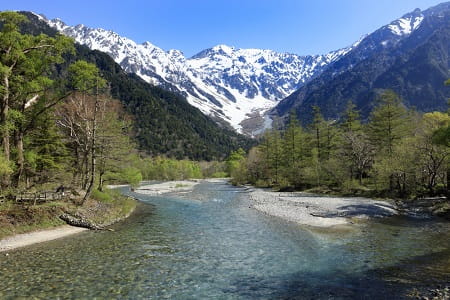
Fly fishing is one of the most popular ways to fish salmon in fresh water, but it’s not the only way.
The exception is sockeye salmon, which rarely strike flies. These plankton-eating salmon swim with their mouths open.
Flossing For Sockeye Salmon
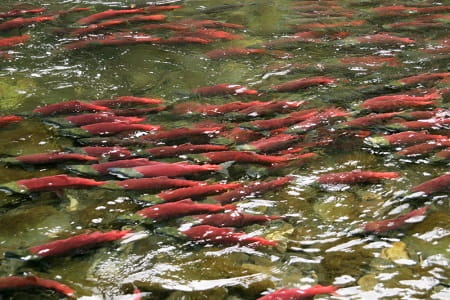
Flossing or Linning: In Alaska, you are permitted to Floss sockeye salmon using a short leader and a weight.
Flossing is when you cast out, let the hook sink, and then allow the line to run through multiple salmon that are swimming with their mouths open.
As the line goes into their mouths and slips between their jaws, the hook will eventually slide across and into their mouth. Hence the name flossing.
If you hook the sockeye in the mouth, then it’s fish on. Not all areas will permit this method, so check the regulations before you fish.
Lure Fishing For Alaska Salmon

Lure Fishing: Lures are good for salmon in rivers or from shore in the Ocean. Brightly colored lures (pinks, orange, yellow, green, silver) work well, and lures with a rattle are also effective for chum and coho salmon.
Spoons, spinners, and plugs like a Flatfish are good bets for lures.
Check my best lures and lure fishing methods for salmon fishing.
Drift Fishing
Drift fishing from a boat or from shore is one of the most popular non-flyfishing methods of fishing salmon in Alaska.
Drift fishing allows your bait, lure, or fly to bounce and drift along the bottom with the current in a natural way.
You simply cast your bait with some weight out into the current and let it drift along. Maintaining a semi-tight line is key and will help you detect more bites.
You can see more about this method at: Drift Fishing For Salmon
Plunking
Plunking For salmon is also common. Plunking means casting your rig out and then keeping the bait in one spot with a heavy weight, and then just waiting for the salmon to swim by and grab your bait.
This works pretty well when the salmon are aggressive and on the move. For more info on this method check out Plunking For Salmon.
Sight Fishing For Alaska Salmon
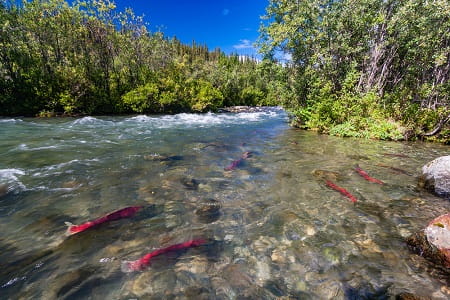
There are many clear rivers in Alaska and many of the tributaries and upper sections of the bigger rivers can be very clear.
Clear rivers can be excellent for sight fishing for salmon and targeting them with salmon roe while drift fishing or float fishing, or casting with a lure, to the fish you can see.
This is a good option for guided fishing trips in smaller streams. Many guided fishing trips will allow you to use spinning or fly rods.
Fly Fishing For Alaska Salmon
Nymphing – wet flies that mimic aquatic insect nymphs – means you are targeting salmon in the strike zone rather than on the surface.
Spey fishing – A two-handed fly rod casting style with little to no back cast that still allows for very long casts. It is a roll-type cast, which enables you to target distant points. With Spey fishing, anglers cast across the river and let the line tighten to swing their Spey fly from one side of the river to the other.
Spey flies are generally larger streamer-type flies that resemble baitfish.
Streamer fishing – A wet fly that looks like a shad, minnow, or other baitfish. These are submerged flies and are normally stripped or twitched. Streamer fishing with large brightly colored streamer flies of 3 to 5 inches is very popular in river fishing trips for salmon.
Dry fly fishing – is a top water fly that floats on the surface. It is also a trout fly technique, but silver salmon and kings strike dry flies. Salmon strike due to aggression and not necessarily to feed. They pick off anything that might eat roe.
Flossing With Fly Rod – A snagging technique using nymphs or sunk flies that is legal in Alaska and used only for Sockeye Salmon. You slide your fly through the water at the bottom and hope the line gets caught in the salmon’s open mouth and slides through and then snags the fish in the mouth.
Be sure to check out Fly Fishing Alaska for more on all species of fly fishing including trout, char, Dolly Varden, and Pike.
Spin Fishing For Alaska Salmon

Spin fishing for salmon uses spinning rods and reels instead of fly fishing.
You can set up your spinning rod with a float or bobber and allow the bait to suspend in the current.
You can spin fish when drift fishing or plunking for salmon.
Spin fishing allows you to use many of the techniques above. Generally, we are talking about tossing lures and retrieving them.
You can also use bottom bouncing to allow your lure or bait to work the river and current.
Float Fishing and Centerpin Fishing Alaska Salmon
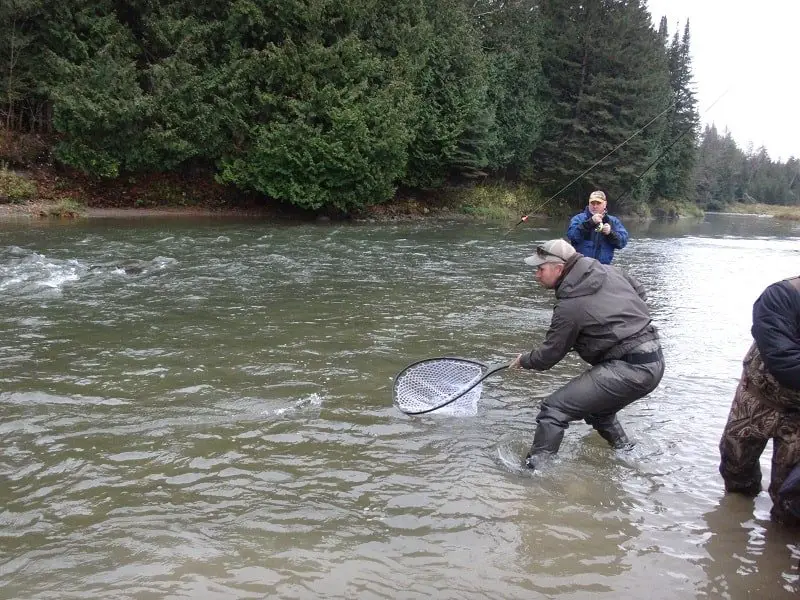
Float fishing uses a bobber to suspend your bait at a specific water depth. You adjust the float or bobber to extend the line or shorten it.
Centerpin fishing uses a special reel called a Centerpin reel and a bobber, which allows you to control the speed of the line and the float so that your bait presents in a natural way.
Float fishing can be done using a spinning, bait caster, or centerpin fishing reel. The key to the technique is that the bait is not on the bottom and it remains in the strike zone.
Best Baits For Alaska Salmon Fishing
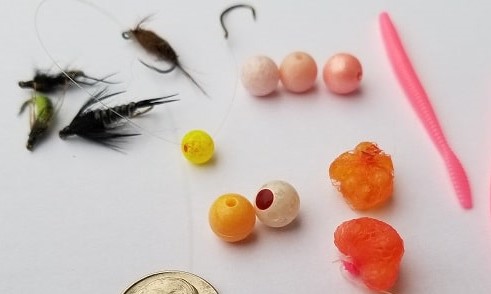
The best bait for Alaska salmon fishing is salmon roe, also known as spawn, or spawn bags.
Skein eggs are another option and can often be the over-all best bait for salmon when fishing in the river or ocean at the river mouth.
Where you would tie loose eggs into netting and call them roe bags or spawn sacs, skein eggs are held together by a natural connective tissue produced by the salmon.
Sand shrimp or salad shrimp can be a good bait for chinook salmon. Those who use sand shrimp may concoct their own blend of roe and shrimp.
Beads imitate loose salmon eggs well and can be a deadly effective bait for Alaska Salmon. Check out Bead Fishing For Salmon.
Best Flies For Alaska Salmon
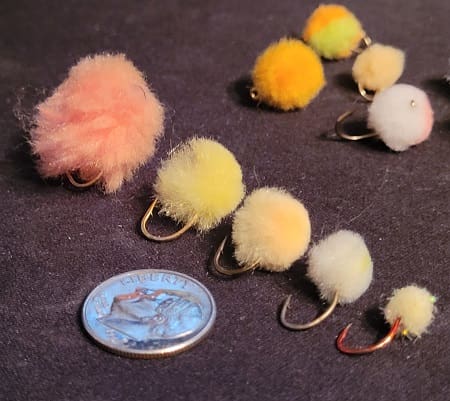
Flies can be used with float fishing, Drift Fishing, Bottom Bouncing, Bobber Doggin, and fly fishing.
Egg pattern flies imitate salmon eggs, such as the Glo Bug flies are good. You can tie your own egg pattern flies.
Woolly Buggers are probably the top fly for salmon fishing. Black, pink, and white are prime colors.
Leech pattern flies, especially the egg-sucking leech are other good options.
You can also use streamer flies by either nymphing with them, casting and swinging them across the river, or by stripping them in.
Larger 3 to 5-inch flies will work great if swung or stripped in, and small 1 to 3-inch flies are best under an indicator, a float, or dead drifted.
See 40 of the top salmon flies for all species and all fly fishing methods at Best Flies For Salmon Fishing.
Gear For Alaska Salmon Fishing
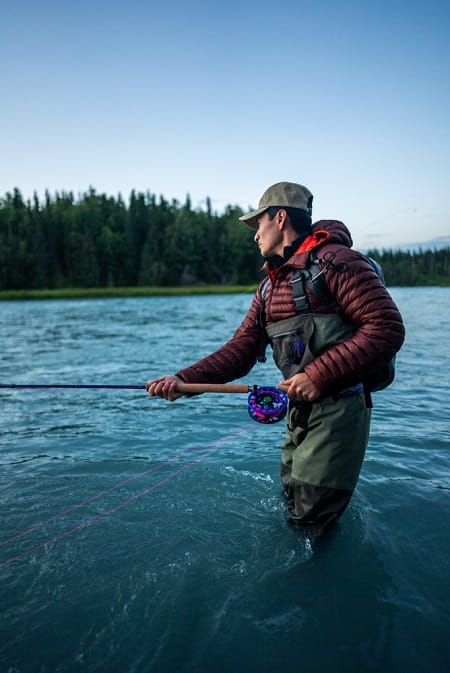
- Waders with boots
- polarized sunglasses
- rain gear
- hand warmers
- fishing gloves
- net
- rod and reel
- line
- bait – flies, lures, or roe.
To fish successfully, you will need all this gear and you will need it in the appropriate sizes that can handle the big Alaska salmon. See River Fishing Gear.
If you use a guide, chances are they will supply you with a quality rod, reel, and bait, lures, flies. Check with your guide about what you should bring. Dress for changing weather.
If you opt for a fly-in fishing trip check with your pilot about weight restrictions.
Do It Yourself Alaska Salmon Fishing Trips
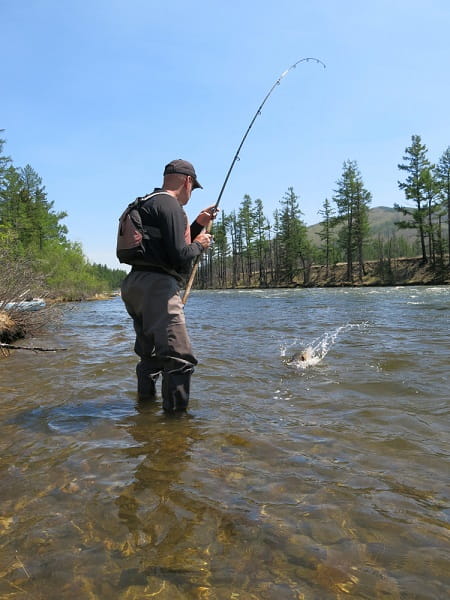
DIY fishing for salmon in Alaska is doable. You just need to know the rules and safety precautions and then proceed with caution.
You need to know where you can and cannot fish. You also need to know the dangers of fishing without an experienced guide.
Safety Tip: Always go with a buddy, especially one you can run faster than (that was a joke).
But it is highly recommended you fish with at least one person just incase you get in trouble.
Pack your cell phone and communication device in a water-tight compartment. You should also know that cell phone service is not always available.
Also, let someone know where you are going and when you should be back.
The bears are almost a guarantee when the salmon are in the river, and they can be dangerous. I would bring a gun! Bear spray may not save your life, and bear bangers might only help temporarily spook them. See my article Salmon Fishing Near Bears.
Moose can also be a danger to anglers. A full-grown male moose can weigh 1,500 pounds.
Many parks allow you to fish in designated areas. Combat fishing on a DIY salmon trip in Alaska is not uncommon. Paying for a guide is a better option. Guides have permits to allow you to fish in restricted areas and they will keep you safe.
Dip net fishing for salmon is common among Alaska residents. Only Alaska residents are permitted to fish this method, but this is something you might see while there.
Can You Catch Salmon At Night In Alaska?
Yes, you can fish at night. Alaskan summers are the land of the midnight sun. The sun sinks onto the horizon but does not set completely. Salmon also do not rely on sun or darkness to bite.
Each river is different, and some rivers may limit when you can fish but that is more of a conservation effort. The danger of fishing at night and in the very early mornings is that bear interaction is more likely then.
Ocean Fishing For Alaska Salmon
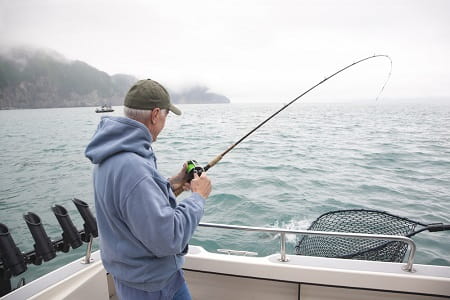
You can fish any of the cities along the inside passage or stop at a legendary port of call, such as Homer – the Halibut Capital of the World.
Seward is another good bet, as are all of the small towns along Cook Inlet.
Try These:
- Juneau – Best Damn Charters – They come highly recommended amid a sea of charter boats. They offer private salmon or halibut charters.
- Homer – You cannot really go wrong in Homer – try Homer Ocean Charters or Homer Fishing Charters – world-class fishing and options for self-guided fishing.
- Seward – J-Dock Fishing Co is a good bet. They have solid reviews and a knack for helping you limit out on salmon.
Shore, Beach, and Pier Fishing Opportunities
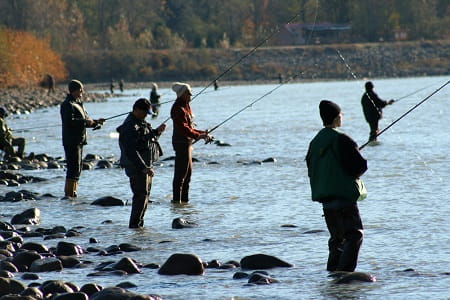
You can fish from the shore for salmon in most towns along Cook Inlet.
The towns of Kenai, King Salmon, Anchor Point, and Coho are just a few of the local towns on Cook Inlet.
The best places to fish from shore are in areas where rivers empty into Cook inlet. There are several options here including Kenai.
Salmon Guides and Guided Salmon Trips
Personally, Alaska fishing guides are the best option for fishing Alaskan salmon. The expert guides understand the rivers and the fish and where the fish are in the rivers. Most offer professional guide service and high-quality fishing gear, plus the knowledge to back it up while keeping you safe.
- Kenai – River Rise Fishing Guides LLC – organized, efficient, friendly, and knows how to help you fish the Kenai River and other local rivers.
- Soldotna – Jim Rusk Fishing Alaska – Kenai and Kasilof rivers.
- King Salmon (town) – Katmai Fishing Guides – Naknek River and Bristol Bay into Katmai National Park.
- Denali Area Alaska – Inland and headwaters fishing for salmon, huge rainbow trout, and grayling.
Best Salmon Fishing Lodges In Alaska
- Kenai Princess Wilderness Lodge – Central to most things in Copper Landing and easy access to guides and the Kenai River and Kenai peninsula.
- No See Um Lodge – Remote – amazing fishing on the Kvichak River for big Kings and Rainbow trout. – Fly in fishing Lodge and a haven for fishermen.
- Kodiak Island Resort – Salmon fishing – 4-star service – remote, beautiful, and many options for fishing. At the head of the Kenai peninsula.
Best Cities For Alaska Salmon Fishing
All on the Kenai peninsula.
Cooper Landing – easy access to the upper Kenai River – easy 2+ hour drive from Anchorage
Kenai – Sits along Cook Inlet and on the world-famous Kenai River. Plenty of guides and charters – fish saltwater or freshwater. Fly in from Anchorage or drive for 3 hours by car from Anchorage.
Homer – is an easy access to Cook Inlet, salmon, and halibut fishing plus access to bottom fish and trophy ling cod.
Alaska Wildlife Bears, Scenery, And Dangers
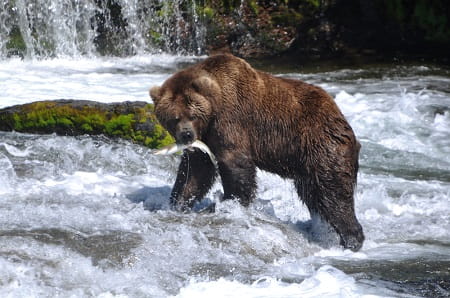
Bears in Alaska are no joke. A bear encounter ends badly for people. The bears may not kill you, but you are miles from medical help, and that means a very expensive helicopter ride to a bigger city.
It is hard to keep your mind on fishing when you are standing in the shadow of ice-capped volcanos and ancient conifer forests.
The bald eagles, wolves, whales, puffins, and fish are amazing – as are the bears. A guided fishing trip helps reduce bear danger and your guides understand how to handle bears.
However, bears are not the only danger. Moose are easily agitated, and they charge with 1,500 pounds and big, sharp hooves or massive racks of horns.
While all of this is scary, there are ways to enjoy fishing in Alaska that keep you safe.
Tight Lines,
Graham
